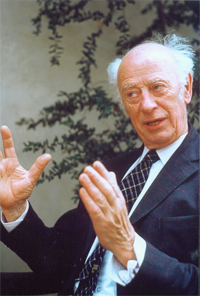
 .... Fig 1: Sir Charles Maurice The year 2003 commemorates the 75th anniversary of the Great Barrier Reef Expedition, the greatest marine science adventure since the Challenger expedition of 1872-1876. Its outstanding successes are undisputed and the expedition’s significance is just as valid today as it was then. Born in 1899, Maurice Yonge was only 28 when he was appointed to lead the Great Barrier Reef Expedition of 1928-1929. Maurice had created a reputation for himself based on his PhD studies on oyster physiology and subsequent post-doctoral research at Plymouth and elsewhere, and was ultimately considered the best person for such a task. The expedition’s main party of twelve scientists, including his new wife, Mattie, as medical officer, arrived at Low Isles on 16 July 1928 to begin their thirteen months of research. We sometimes forget that Maurice was a physiologist (schooled by the great Lancelot Hogben at Edinburgh), but it held him in good stead on the reef where he undertook, among other things, his pioneering research on the relationship between corals and giant clams and their association with zooxanthellae. At expedition end too it was he who edited the six volume reports of the work undertaken and which was published by the Natural History Museum, London. On return to Great Britain, Maurice was appointed to the Chair of Zoology at Bristol, then Glasgow and, finally, upon retirement from his Regius position there, Edinburgh. From 1930 until his death in 1986, he devoted his life largely to the study of the functional morphology and evolution of the Bivalvia, writing his last paper in his final months and thus leaving us with a continuous publishing history of 63 years. During his lifetime, Maurice received many honours and much acclaim, but it was, at least for this author, his charming indifference to fame, his approachability, particularly by young scientists, and his infectious enthusiasm for all things “bivalve” that endeared him to so many people. It was not, however, just for his pioneering work on the Bivalvia but also for his greater contribution to the field of marine science that the Malacological Society of London established in 1993 The Sir Charles Maurice Yonge Trust Fund to encourage research on the group he made his own and cast such an illuminating light on. Brian Morton [This year’s Award will be for a suitable bivalve paper at the Forum on November 6th.] Fig 1: Sir Maurice photographed in Longwood Gardens near Philadelphia in 1975 by Dr Robert Robertson, Academy of Natural Sciences, Philadelphia.
|
|